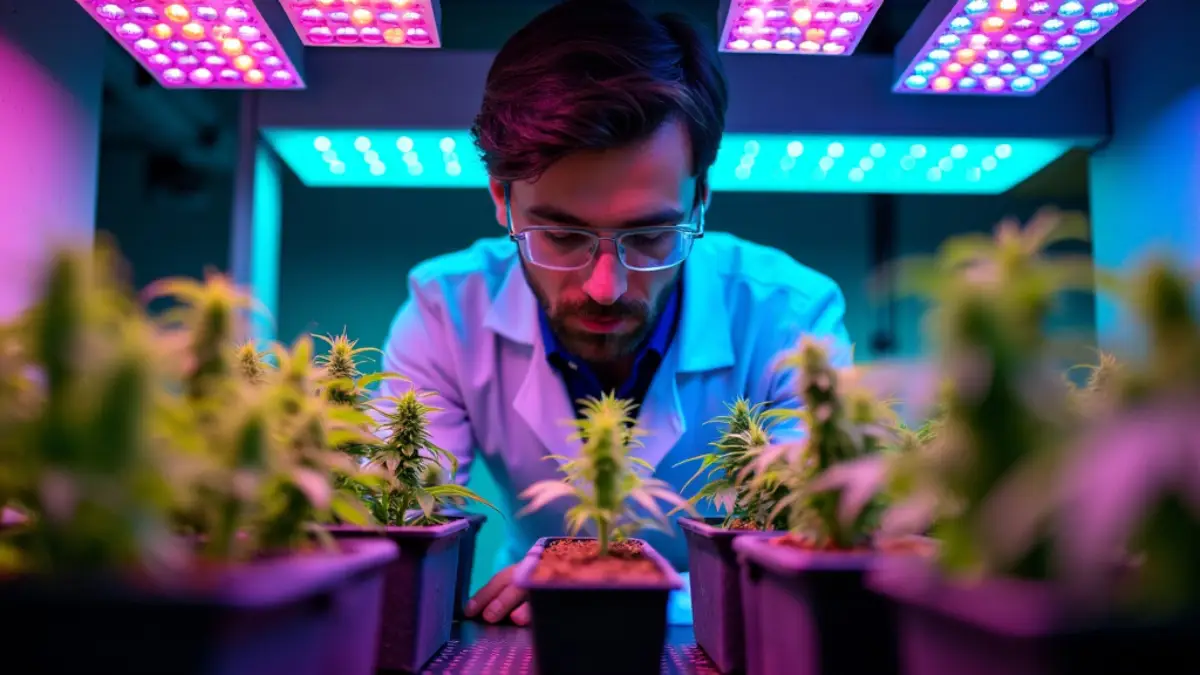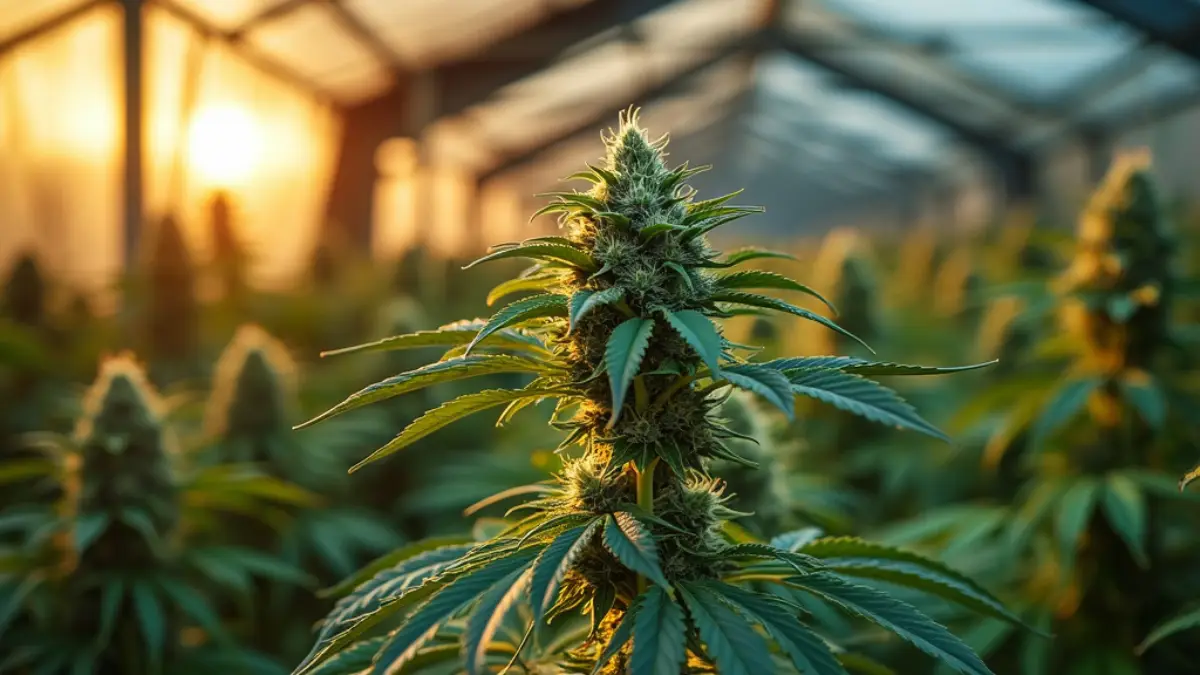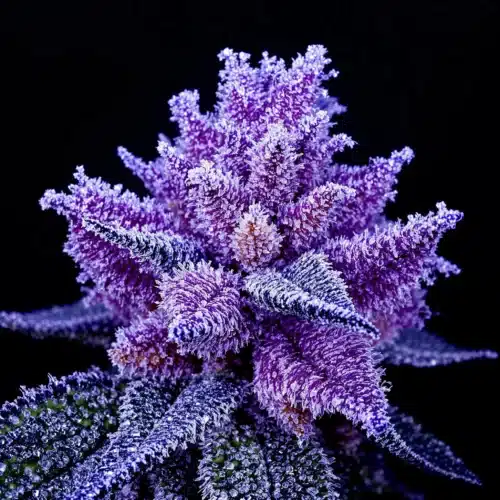Why is some weed purple? The vibrant purple hues in cannabis are one of the most eye-catching traits, but why do some plants take on this color? The answer lies primarily in anthocyanins, a group of pigments also responsible for the colors in blueberries, grapes, and red cabbage. These pigments become more visible in cannabis when certain environmental conditions, like temperature changes or shifts in pH levels, come into play. However, it’s essential to understand that not every strain will turn purple, as genetics also play a crucial role.
Many consumers associate purple cannabis with a unique experience, but the color itself doesn’t necessarily change the effects of the plant. In fact, purple hues are simply a visual feature that attracts attention. While purple strains are popular for their exotic appearance, they don’t always mean higher potency or better quality. Other factors, such as the strain’s terpene and cannabinoid profile, will ultimately determine the experience.
What Causes is Some Weed Purple
Cannabis plants produce anthocyanins as part of their natural defense mechanism, similar to how other plants adapt to their environment. When chlorophyll, the pigment responsible for the green color, begins to break down, anthocyanins can take over, resulting in purple, blue, or red hues. This typically occurs when the plant is exposed to colder temperatures, especially at night, or when it is nearing the end of its life cycle. These vibrant colors often appear in buds that later give joints their distinctive joint burning purple appearance, especially in strains known for rich anthocyanin expression.
In addition to cooler temperatures, pH levels can influence color changes. Acidic conditions may cause anthocyanins to appear red, while alkaline environments bring out blue tones. The vibrant purples seen in cannabis are often the result of a neutral pH, though this varies depending on the strain’s genetics and growing conditions. Therefore, careful control of both environmental and soil conditions can enhance the color changes during the flowering phase.
Promos & Deals
How do Genetics Influence is Some Weed Purple?
Why is Some Weed Purple? Genetics play the biggest role in determining whether a cannabis plant will turn purple. Only strains with a genetic predisposition to produce anthocyanins can exhibit this coloration. These strains are bred specifically for their potential to turn purple under the right conditions. Cultivars without this genetic trait will remain green regardless of environmental influences.
The genetic ability to produce anthocyanins is the foundation for creating purple cannabis. Some strains, like Purple Kush or Kyle’s Cherry AK, naturally develop purple hues even in standard growing conditions. However, even with these genetics, external factors like temperature shifts can enhance or suppress the pigmentation. Strains without these genetics will simply never turn purple, regardless of the growing conditions applied.

Why is Some Weed Purple Tend to Turn Purple, Blue, or Red?
Several strains are known for their ability to develop purple, blue, or even red hues. Some of the most popular examples include:
- Sirius Black
- Kyle’s Cherry AK
- Blue Dream
- Oregon Peach
- Blackberry Kush
These strains have the genetic markers necessary to produce high levels of anthocyanins, leading to their unique colors. Purple strains like Sirius Black or Oregon Peach not only offer striking visuals but often carry distinct flavor profiles, such as fruity or earthy tones, further enhancing their appeal.
The development of anthocyanins in these strains is often more pronounced in cooler climates or when grown outdoors, where natural temperature fluctuations encourage pigmentation. This phenomenon helps explain why some weed is purple, especially when environmental stressors trigger the production of these pigments. Indoor growing setups can replicate these conditions by carefully regulating temperature and light exposure to encourage color changes closer to harvest time.
How Does Cannabis Go from Green to Purple?
Cannabis turns from green to purple when chlorophyll, which gives plants their green color, begins to break down. This usually happens in response to changes in temperature or the natural aging of the plant. When chlorophyll fades, anthocyanins, present in genetically predisposed strains, become more visible, turning the plant purple. Lower temperatures during the flowering phase often accelerate this process, particularly in outdoor grows.
This color change typically occurs in the final stages of the plant’s growth cycle, particularly as temperatures drop during the night. By carefully lowering the temperature in controlled environments, growers can enhance the purple coloration without stressing the plant too much. However, it is important to note that extreme cold can damage the plant and affect the final yield, so gradual changes in temperature are key.

What Other Environmental Factors Affect the Color of Cannabis?
Besides temperature, several other factors influence whether cannabis turns purple:
- pH Levels: Anthocyanins react to pH changes, appearing red in acidic conditions and blue in alkaline environments. For purple hues, neutral pH levels are ideal. Adjusting the soil’s pH during the flowering phase can significantly impact the final color of the buds.
- Light Exposure: High-intensity lights, especially LED lights, can enhance anthocyanin production in some strains. Different light spectrums, particularly ultraviolet (UV) light, can boost the expression of these pigments, leading to more vibrant colors.
- Nutrient Availability: A well-balanced nutrient environment ensures that anthocyanins are produced without compromising the plant’s health. However, nutrient deprivation should be avoided, as it can stress the plant and negatively impact the harvest. Starving a plant of essential nutrients in an attempt to induce purple hues can lead to weaker plants and smaller yields.
Are Some Weed Purple More Potent?
Contrary to popular belief, purple cannabis strains are not necessarily more potent than green strains. In fact, some evidence suggests that purple strains may produce slightly lower THC levels because the production pathways for anthocyanins and cannabinoids can compete for resources. However, many purple strains still offer strong effects due to their overall cannabinoid profile, such as Gelonade and Blackberry Kush.
The color of a strain has no direct correlation with its potency. The unique combination of cannabinoids, such as THC or CBD, and terpenes will ultimately determine the strength of a strain. While some users wonder why is some weed purple, the answer lies in genetics and environmental factors—not in potency. Although purple strains may look more exotic, their effects are determined by their chemical makeup rather than their appearance.
Benefits of Some Weed Purple
While the color itself doesn’t guarantee higher potency, anthocyanins responsible for the purple color, do have antioxidant and anti-inflammatory properties. However, the health benefits of these compounds in cannabis are not as pronounced as in other anthocyanin-rich foods like berries. The appeal of purple cannabis often comes from its aesthetic value and unique flavor profiles, which can be sweet, fruity, or earthy.
Purple cannabis strains are particularly popular for their bag appeal and unique flavors. Many enthusiasts find themselves asking, “Why is some weed purple?”—a question that highlights the curiosity surrounding these visually striking buds. Their antioxidant properties, while mild, may contribute to a more enjoyable and flavorful smoking or vaping experience. However, most consumers are drawn to purple strains for their visual beauty and sensory experience rather than specific health benefits.
Popular Purple Cannabis Strains
If you’re intrigued by the idea of purple cannabis, here are five popular strains known for their stunning colors and unique profiles:
With THC levels ranging from 15% to 25%, Kyle’s Cherry AK offers a vibrant mix of citrus and fruity flavors. This strain is perfect for those seeking a happy, relaxed, and talkative experience, making it ideal for social occasions. Kyle’s Cherry AK is well-loved for its energetic yet calm effects, allowing users to enjoy both a mental lift and a physical calm. Its fruity flavor adds to its appeal, making it a favorite for social settings.
A fan favorite, Blue Dream has THC levels between 17% and 24%. Its sweet berry, blueberry, mango, and fruity flavors are complemented by its happy, relaxed, and talkative effects. This strain is a balanced hybrid, known for offering users a mild yet enjoyable high. Blue Dream is often used for its calming effects that don’t heavily sedate, making it ideal for those looking to relieve stress without becoming overly drowsy. It’s a go-to for both novice and seasoned users.
This potent strain boasts THC levels between 17% and 27%, delivering strong earthy, fruity, and sweet flavors. Purple Kush is famous for its deeply relaxing and happy, talkative effects, making it perfect for unwinding after a long day. The strain is also noted for its ability to relieve pain and induce deep relaxation, making it an excellent choice for nighttime use. Its heavy indica lineage ensures a full-body high that soothes both mind and muscles.
This hybrid offers a potent experience with THC levels between 21% and 24%. The strain combines fruity, kush, and sweet flavors with calming effects, leaving users feeling happy and relaxed. It’s a popular choice for those seeking relief from stress while enjoying rich, flavorful smoke. The Blueberry influence brings a distinct fruitiness, while OG Kush ensures a robust, earthy undertone. This strain is known for its balanced effects, offering a perfect mix of mental clarity and physical relaxation.
These strains not only offer stunning colors but are also loved for their unique flavor profiles and effects. If you’ve ever wondered, “Why is some weed purple?”, the answer lies in the plant’s genetics and environmental factors, which contribute to its vibrant hues. From calming indicas to balanced hybrids, purple cannabis strains provide a variety of experiences that cater to different preferences and needs. Whether you’re drawn to their striking appearance or their sweet, fruity flavors, these strains stand out as some of the best in the cannabis world.

FAQs
Is purple weed stronger than green weed?
No, the color of cannabis doesn’t directly influence its potency. THC content and overall strength are determined by the strain’s genetics. While some purple strains, such as Purple Kush, can be very potent, the color itself does not guarantee higher THC levels. In fact, purple strains can sometimes produce slightly less THC because the plant’s resources are diverted towards producing anthocyanins instead of cannabinoids like THC.
Why does cold weather make cannabis turn purple?
Cold temperatures help break down chlorophyll, the compound responsible for the green color in plants. As chlorophyll diminishes, anthocyanins, the pigments responsible for purple, red, and blue hues, become more visible. This effect is more pronounced in strains that are genetically predisposed to contain high levels of anthocyanins.
Can I make any cannabis plant turn purple?
Not every strain can turn purple. Only cannabis strains with high anthocyanin levels can change color under the right environmental conditions, such as cooler temperatures or changes in pH. Strains without these genetic traits will remain green, even if exposed to the same conditions.
Does purple weed taste different?
The color of cannabis doesn’t directly affect its taste, but many purple strains, like Blueberry x OG Kush and Purple Runtz, are known for having sweet, fruity, or berry-like flavors. The flavor of cannabis is more closely linked to the strain’s terpene profile rather than its color.
Are there any health benefits to purple weed?
While anthocyanins have antioxidant properties, the health benefits derived from them in cannabis are minimal, especially when compared to foods like blueberries or grapes. Purple weed offers the same potential therapeutic benefits as any other cannabis strain, depending on its cannabinoid and terpene profile, but it’s not necessarily more beneficial because of its color.
















